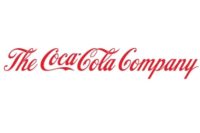When describing many of the former leaders of The Coca-Cola Co., for Muhtar Kent, chairman and chief executive officer of the Atlanta-based company, the words that come to mind are “constructively discontent.”
“Constant renewal is in our DNA — this has been handed down over the years by Dr. Pemberton, Asa Candler, Robert Woodruff, Paul Austin, Roberto Goizueta, Don Keough and countless others,” he says. “They embodied what it means to be ‘constructively discontent’ and demonstrated the virtues of dedication, passion and hard work. To succeed, we have to challenge ourselves every day to keep thinking about the new things we can do for the business to make it better.”
Kent, who is Beverage Industry’s 2012 Executive of the Year, uses that same philosophy in leadership of the 126-year-old company, a position that he says he is honored and humbled to have.
“I am fortunate to stand on the shoulders of the leaders long before me who created this amazing company,” Kent says. “I am proud to work today with such a strong leadership team — both at our company and our bottling partners.”
Visionary outlook
Although The Coca-Cola Co. has experienced decades of success, the company embodied that “constructively discontent” philosophy a few years ago when it unveiled its 2020 Vision.
“The 2020 Vision creates a roadmap for working and winning together with our bottling partners,” Kent notes. “It’s not for the fainthearted. What we are going to try to do in 10 years is to create a company the size it took us more than 120 years to build — to double our system revenues in 10 years. But it is achievable because we believe that, despite current macro-economic challenges, a billion new members of the middle class are going to emerge in the world. This growing population will have a much higher increased demand for non-alcohol ready-to-drink beverages.”
Aligning itself with its bottlers around the world, The Coca-Cola Co. has set out a common set of strategies and key goals to guide its activities as part of its 2020 Vision. The following are some of those goals:
- More than double its system revenue while increasing system margins;
- More than double its servings to approximately 3 billion a day by 2020;
- Attain global leadership in sustainable water use and industry leadership in packaging, energy and climate protection;
- Leverage its people, time and money for the greatest effectiveness; and
- Ensure that the company is the most preferred and trusted beverage partner to all of its stakeholders.
Kent adds that its partnership with its more than 300 bottlers is important for the advancement of the company’s brands.
“This powerful partnership, guided by the power of our 2020 Vision, is what truly drives sustainable results and propels the growth of our brands,” he says. “Together we continue to invest in our brands on a global scale through world-class marketing and commercial strategies. This great Coca-Cola system passionately partners with more than 20 million retailers across the globe. Those great retailers range from the smallest kiosk to the largest modern hypermarket.”
Advancing those relationships with its bottlers also has included the development of Coca-Cola Refreshments (CCR). In 2010, The Coca-Cola Co. acquired the North American business of its largest bottler, Coca-Cola Enterprises. Renaming the sales and operational elements to Coca-Cola Refreshments, The Coca-Cola Co. also folded a majority of its U.S. and Canada businesses into CCR. In late 2011, the company also acquired Great Plains Coca-Cola Bottling Co.
Steve Cahillane, president and chief executive officer of CCR North America, notes that the company is pleased with the progress it has seen with CCR and its role in achieving The Coca-Cola Co.’s 2020 Vision.
“Our 2020 Vision calls for decisive and timely action to continuously improve and evolve our system to best serve our customers and consumers,” he says. “We think our acquisition of Coca-Cola Enterprises’ North American operations was a key step toward that objective.”
Cahillane adds that response from its customers has been quite positive regarding its actions to create value for them.
“We are receiving positive customer feedback regarding number of feet on the street, one Coca-Cola voice and our ability to make decisions and execute more quickly,” he says.
Additional progress the company has seen includes how quickly it has been able to gain wins with some of its longstanding customers by being able to make decisions and act faster in response to marketplace opportunities, as well as how quickly the company was able to finalize and roll out an aligned organizational structure and how people have embraced those roles and responsibilities, Cahillane says.
“We recently announced further changes to our operating structure that will complete the formation of a unified North America structure, designed to leverage world-class brand marketing capabilities with best-in-class supply chain and customer service capabilities,” he adds.
Effective Jan. 1, 2013, the company will organize around three major operating businesses: Coca-Cola International, led by Ahmet Bozer, will consist of the company’s Europe, Pacific and Eurasia & Africa operations; Coca-Cola Americas, led by Cahillane, will consist of the company’s North America and Latin America operations; and Bottling Investments Group (BIG), the company-owned bottling operations outside of North America, will continue to be led by Irial Finan. The company says the new structure will consolidate leadership of global operations under the Bottling Investments Group and two large geographic regions to streamline reporting lines, intensify focus on key markets and create a structure that leverages synergies and provides flexibility to adjust the business within these geographies in the future.
As part of the new operating structure, J. Alexander “Sandy” Douglas Jr., current president of Coca-Cola North America, will move to global chief customer officer, reporting to Kent, while also continuing to lead the North America franchise strategy. Additional changes include Katie Bayne, current president of North America Sparkling Beverages, will become president of North America brands, responsible for strategic marketing of sparkling beverages, Glacéau, Minute Maid juices, coffee, tea and water, diversity business development and Latin Affairs in the United States; and Brian Kelley, current chief product supply officer for CCR, being promoted to president and chief operating officer of CCR.
Cahillane applauds the abilities of the new structure to position the company’s U.S. and Canada business to operate as an aligned and agile unit to serve the bottlers, customers and consumers in its flagship market but notes that there still is a lot more to do.
“We are continuing to enhance the way we align our teams, build our infrastructure, streamline protocols and routines, and make Coca-Cola an even greater place to work,” he says. “Our destination is to be the best brand, sales and customer service system in North America.”
In order to realize the company’s growth, it understands the importance of a global commitment.
“If we’re going to achieve our 2020 Vision of doubling our business over the rest of this decade, we will need to grow across all markets — developed, developing and emerging,” Kent says.
In addition to its $12 billion investment to restructure its operations in North America — $3 billion of which was invested last year in North America — the company also continues to invest in Japan and Europe, Kent adds. In September, The Coca-Cola Co. also made a delivery in Yangon, Myanmar, for the first time in more than 60 years.
The company also sees opportunities within the Brazil, Russia, India and China (BRIC) nations and many more. “We also believe in the significant potential of BRIC nations plus Turkey, Indonesia and Mexico,” Kent says. “Africa, home to the youngest billion consumers, also remains a huge opportunity for growth this decade. Over the past 10 years, we have invested $6 billion in Africa, and we will double that to $12 billion by 2020.”
Growing choices
In addition to strengthening its relationships with bottlers and retailers, The Coca-Cola Co. does not forget that the consumer is the customer that all divisions align to please. However, changes within the beverage industry as of late can be tied to an overarching consumer trend: choice.
“The biggest change has been the growing consumer demand for choice,” Kent says. “People are seeking beverages that suit different tastes and lifestyles, and as such, our portfolio is perpetually evolving and expanding based on the changing needs and tastes of our consumers. We now offer more than 3,500 sparkling and still beverages around the world — three times as many as we did a decade ago.”
To put that into perspective, The Coca-Cola Co.’s portfolio featured 239 brands at the end of 2000. Now, the company has more than 500 brands globally today, Kent adds. And the company continues to develop new products. Last year, more than 500 new products were launched globally; and of its more than 800 low- and no-calorie beverages, more than 100 of those products were launched in 2011, Kent notes.
“This growth across our product portfolio is important to our continued growth,” he says. “It gives consumers more choice in brands, beverage types and calories or no calories — all of which contributes new growth to our business.”
As an example, the company expanded its Fuze lineup to include naturally flavored teas and juice drinks. The new varieties include Lemon Iced Tea, Honey and Ginseng Green Tea, Half Iced Tea & Half Lemonade, Berry Punch Juice Drink and Strawberry Lemonade Juice Drink.
“The new Fuze line of tea products, which will fully launch by the end of 2012, will leverage the equity and unique positioning of the current Fuze brand, targeting the refreshment tea consumer with a winning proposition to accelerate our momentum in this important segment,” Kent says.
With a company portfolio that features sparkling beverages, juices and juice drinks, ready-to-drink (RTD) teas, coffees, waters, sports and energy drinks as well as dairy- and soy-based beverages, The Coca-Cola Co. is committed to providing a variety of products for every lifestyle, every occasion and every person, says Guy Wollaert, chief technical officer for The Coca-Cola Co. That choice allows the company to address health and wellness trends in a variety of avenues.
“For people who want to reduce the calories they consume from beverages, they can choose from our continuously expanding portfolio of low- and no-calorie beverages,” he says.
By utilizing different packaging sizes, the company was able to appeal to consumers who still enjoyed full-calorie beverages but wanted to avoid the calories.
“We also offer our regular-calorie beverages in a wide variety of package sizes,” Wollaert says. “For instance, in 2009, we introduced a sleek ‘mini can’ in several markets that allows consumers to enjoy Coca-Cola, Cherry Coca-Cola, Sprite, Fanta Orange and Barq’s while managing their portions.”
Although numerous packaging sizes and traditional low- or no-calorie sweeteners have helped The Coca-Cola Co. provide consumers with a plethora of choices, emerging sweetener trends also have had an impact on its product lineup.
“Innovation with sweeteners like stevia is vital to the growth of our business, drives greater product variety and delivers more options for consumers,” Wollaert says. “We are rapidly exploring opportunities to increase and expand our stevia-sweetened portfolio across several beverage categories. We also continuously explore and research new natural, low-calorie sweetener solutions that will further expand beverage choices for our consumers.”
Wollaert adds that currently the company offers more than 30 products worldwide that feature stevia, including juices, waters, teas and carbonated soft drinks. Earlier this year, the company released Sprite sweetened with stevia in France. It also offers Fanta Blood Orange in Turkey and Cascal Fermented Soda in the United States, both of which are sweetened with stevia. The Coca-Cola Co. also is testing two new beverages in the United States that are sweetened with stevia and other natural sweeteners: Sprite Select and Fanta Select, he adds.
But beyond developments in house, The Coca-Cola Co. also recognizes the innovative minds and accomplishments of other companies in the beverage landscape with its Venturing and Emerging Brands (VEB) Unit.
“VEB is about ‘what’s new and what’s next’ in the U.S. beverage market,” says Deryck van Rensburg, president and general manager of VEB. “We identify unmet, future consumer needs and emerging trends and incubate new brands against these for our business.”
Rensburg adds that the company accomplishes this by sourcing external growth through acquisitions, entrepreneurial partnering, venture investments, as well as through internal growth sources such as innovation and incubation of successful Coca-Cola brands developed outside of the United States.
“Ultimately our mission is to never let the company be surprised by ‘new’ and be a key contributor to the company’s 2020 Vision and strategy by identifying and nurturing the next series of beverage brands with billion dollar potential,” he adds.
Some of the company’s latest activity with VEB includes the full acquisition of organic RTD tea company Honest Tea, Bethesda, Md., in 2011 and investments in coconut water company Zico Beverages, El Segundo, Calif.
Social experience
Just like how the consumer packaged goods (CPG) business has changed to offer consumers more choices, so has the marketing of CPGs. Embracing the social networking outlets including Facebook and mobile apps, The Coca-Cola Co. developed its own Liquid and Linked marketing communications strategy.
The strategy is about developing stories such as brand content, experiences and conversations that spread across owned, earned, shared and paid media to create value based on brand love and brand value for a shared value of The Coca-Cola Co.’s partners, communities and the global landscape, says Wendy Clark, senior vice president of marketing for The Coca-Cola Co.
“Social marketing is at the core of Liquid and Linked because it helps to fuel the spread of content and conversations around our brands,” she says. “But it’s not an ‘either/or’ between social and traditional. It’s an ‘and’ because social plus traditional media is better than either one standalone.”
Clark adds that social marketing continues to have a strong impact on how the company’s products are promoted. It has democratized consumers by giving them an equal voice to assert their opinions on brands, companies, places and experiences, she says.
One of the biggest changes for brands has been the change from a push model to a pull model, Clark says. With a push model, messages are pushed out to the marketplace in a highly controlled fashion, but with a pull model, consumers engage with content and conversation of which they find interesting, she notes.
“This shift now governs our thinking as we consider the successful promotion of our products,” Clark says.
The strong embracement of social networking has equated to noteworthy achievement for The Coca-Cola Co. On Sept. 4, the company celebrated its 50 millionth fan on Facebook.
“To recognize this incredible convening of the fans, we recommitted ourselves to the central focus of this online community to fuel and spread a happier world,” Clark says. “We launched an app that lets our fans sign up to expressly join us on this journey. Over the next few months, we’ll be partnering with our fans to discover and realize ideas — big and small — to create more happiness in the world.”
This new marketing concept also has been utilized beyond its brands and products. The Coca-Cola Co. developed a series of short films to share its story of the sustainability programs it supports around the world.
“This documentary series, titled ‘Every Bottle Has a Story,’ provides testimonials of the powerful and compelling positive impacts these programs are making in the communities we serve,” says Bea Perez, chief sustainability officer for The Coca-Cola Co. “To date, we have created 36 [films] representing 20 different countries. There are more to come, and we’ll be sharing these via social and traditional media efforts in 2013.” BI








